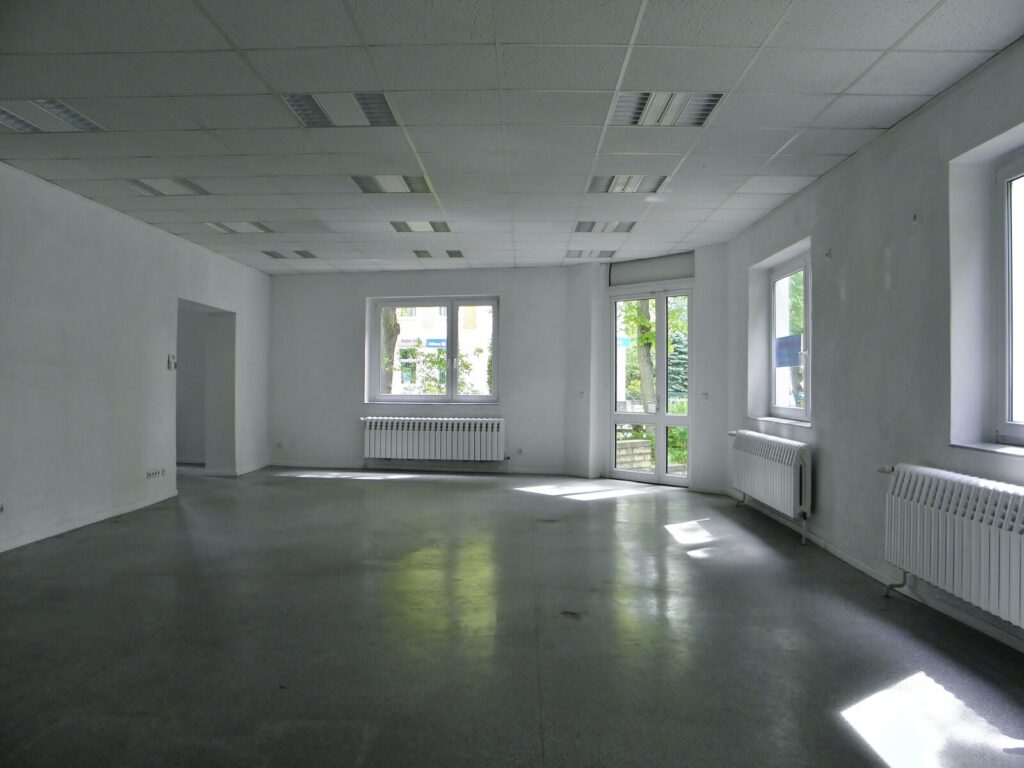Decoding Lumens vs Watts: Your Essential Guide to Understanding Light Bulb Brightness
When selecting light bulbs, you may wonder what matters more for brightness: lumens vs watts? Understanding these terms is crucial. Lumens measure the actual brightness you see, while watts indicate energy use. This guide focuses on the shift from watts to lumens as the key to choosing efficient, bright lighting and what this means for your home or office. You can read more about it on the Energy Star website.
Key Takeaways
- Lumens have replaced watts as the standard measurement for light bulb brightness, offering a more accurate representation of light output and efficiency, which is particularly important for energy-efficient LED technology.
- Wattage is no longer a reliable indicator of brightness due to advancements in light technology, such as LEDs and CFLs, which use fewer watts than incandescents for the same amount of light, emphasizing the need for lumen-based assessments.
- Color temperature, light appearance, and luminous efficacy are important factors beyond lumens when choosing light bulbs, affecting mood and atmosphere. At the same time, smart lighting systems integrate lumens for improved energy efficiency and control. Check out CNET’s guide on how to buy the right light bulb for more information.
Shedding Light on Lumens: The True Measure of Brightness
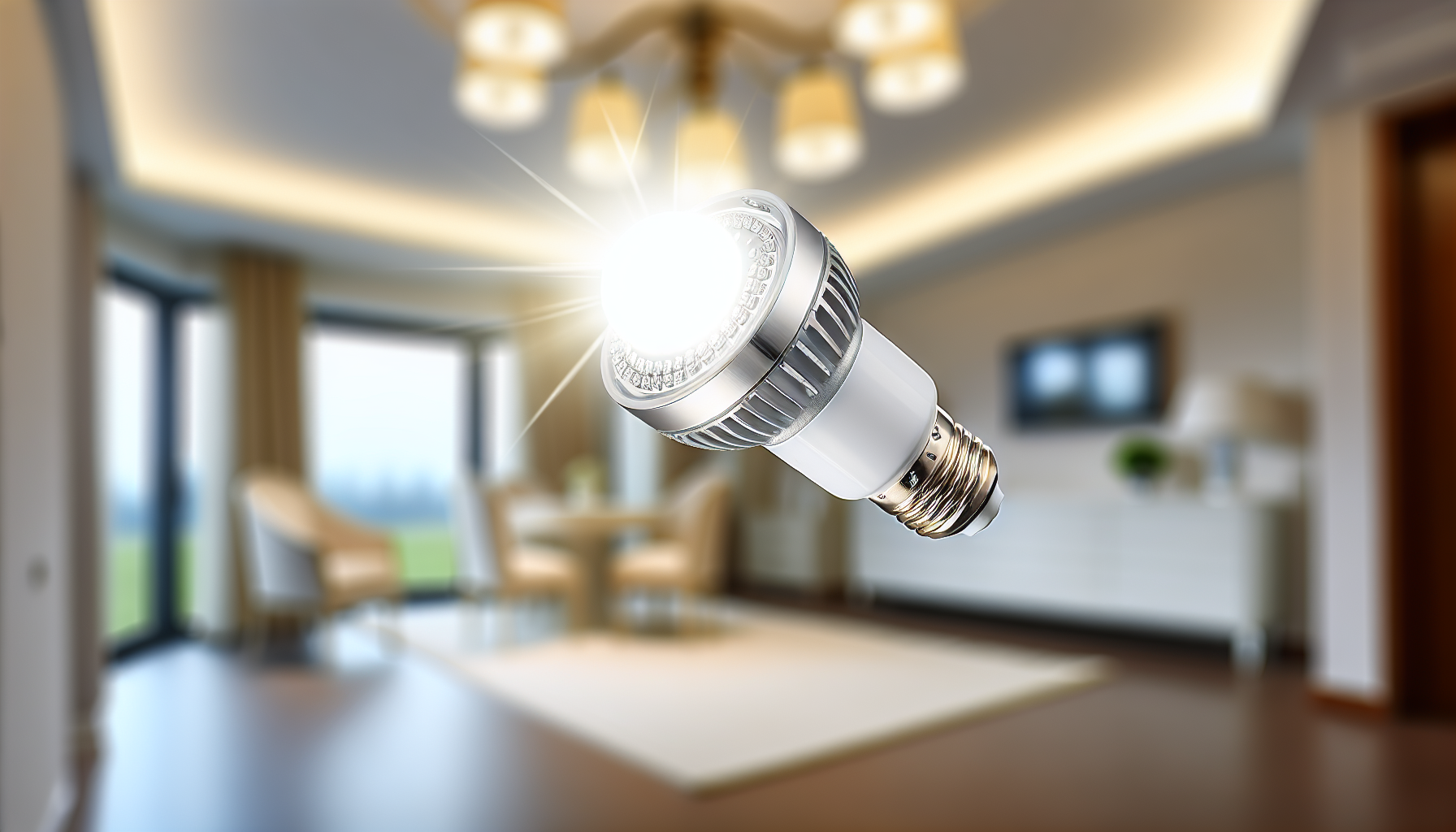
Gone are the days when wattage was used to measure light brightness since lumens are now the most commonly utilized unit for assessing this quality. This move toward energy-efficient bulbs has made it so that a larger watt does not necessarily equate with higher luminosity. Instead, lumens have become an accepted way of gauging illumination levels precisely. Nowadays, one can determine true radiance by understanding how many lumen units exist in a bulb or lighting system rather than relying on traditional power consumption ratings such as those calculated by Watts.
Understanding Lumens
Light output is measured by lumens, enabling an easy comparison of the brightness between different bulbs. They also give a more detailed measurement of how effective one bulb is compared to another with its lumen-per-watt rating. Understanding that watts and lumens can’t be used interchangeably should not be forgotten. While lumens signify visible light generated from a bulb for gauging brightness, wattage represents electric power consumed every second through the device.
How Many Lumens Do I Need?
It is necessary to understand your lighting needs before selecting the number of lumens for the given area. For instance, a 40-watt incandescent light bulb produces 450 lumens, whereas a 60-watt bulb emits 800 illuminations. Where and how you use these bulbs can affect their radiating capability.
For example, one might opt for multiple low-lumen lamps arranged individually or have one bright high-lumen lamp that sufficiently lights up all areas in question efficiently, depending on particular objectives and the location of fixture installation.
The Lumen Advantage in LED Technology
LED technology can provide much brighter light output while utilizing less energy than other lighting forms. Typically, LED bulbs generate between 80 and 100 lumens per watt in terms of efficiency. This is why they’re considered efficient in conserving electricity consumption and the costs associated with using them for lighting purposes. Now that we know just how powerful LEDs are, how do they affect our energy usage? The answer lies in their remarkable lumen-per-watt rate and excellent overall effectiveness, translating into significant savings!
The Diminishing Role of Watts in Modern Lighting
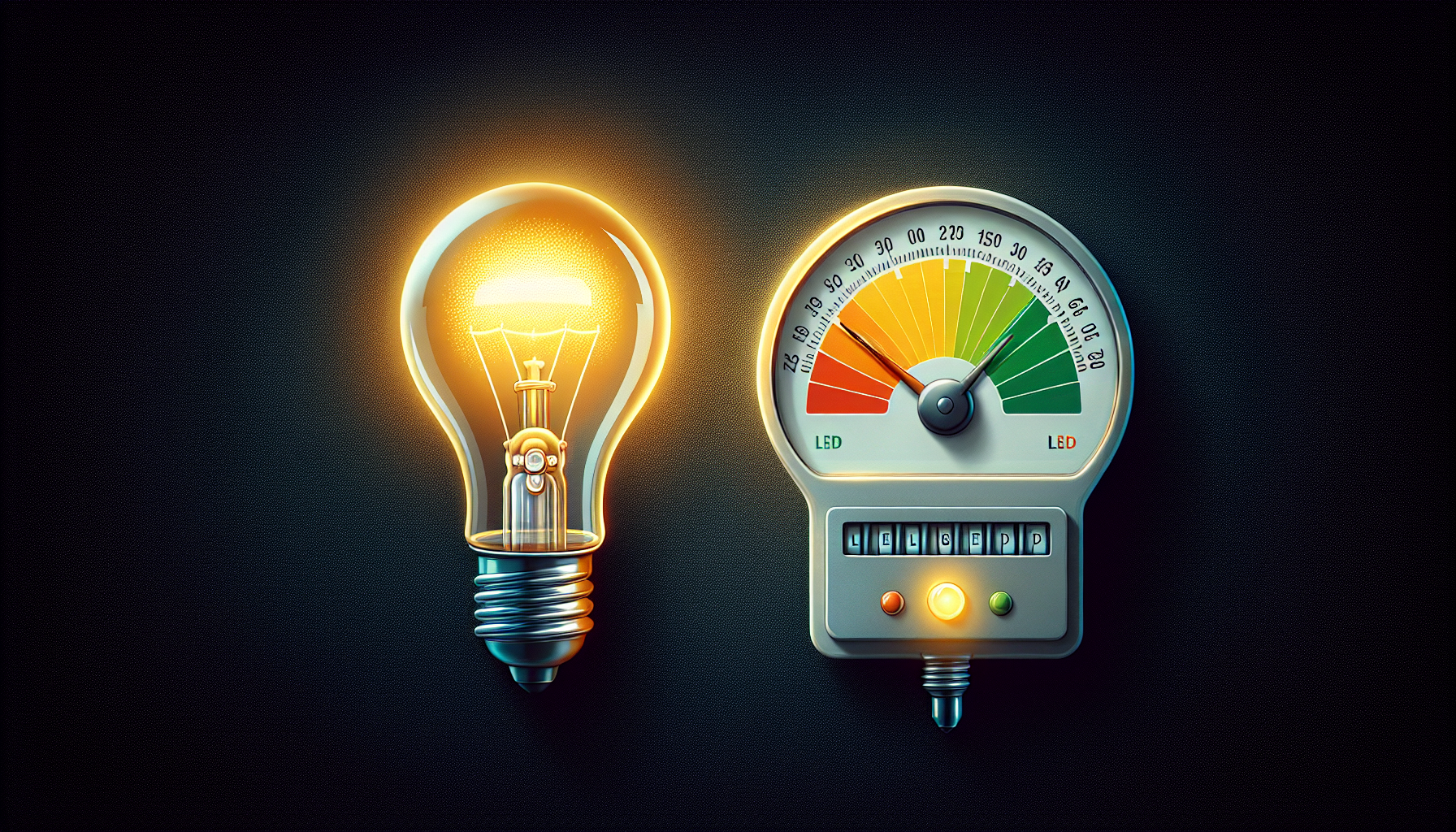
As LED technology has progressed, watts have become less and less reliable in indicating the brightness of a lightbulb. This is due to energy-saving lighting products like LEDs that use fewer Watts for the same amount of lumens—which makes up their superior lumens-per-watt efficiency compared to CFLs.
From Incandescents to LEDs: A Watt’s Evolution
The changeover from incandescent bulbs to LEDs has substantially transformed the significance of wattage in predicting brightness. Light is created when current passes through LEDs, giving them the capacity to produce more light compared with consuming fewer watts than traditional incandescents. Thus reducing Watt’s dependability as an indicator for brightness levels.
Saving with 1StopLighting Coupons
Looking to upgrade your lighting with these energy-efficient options? Make sure to take advantage of 1StopLighting coupons. Here, you can find great deals on a wide range of lighting solutions that will meet your specific needs and preferences. Now that we know just how powerful
Energy Efficiency and Cost Savings
LED bulbs are recommended when selecting a light bulb because they can reduce energy consumption drastically – consuming over 75% less than incandescent bulbs. The lifespan of these bulbs is significantly higher and can be up to 25 times longer! This switch will save an average household around $225 in annual energy costs. When buying lightbulbs, it’s wise to keep LEDs in mind as switching from incandescent could bring many advantages.
Illuminating the Conversion: Lumens to Watts Chart

When selecting an LED bulb, a conversion chart helps establish the association between lumens and watts. By comparing desired brightness to its traditional wattage counterpart, this tool allows one to choose an appropriate LED lamp for their needs.
Deciphering the Chart
A conversion chart for lumens to watts provides lumen values alongside their respective wattage equivalents. This helpful table assists individuals in picking the right bulb type between LED, CFL, and incandescent by giving them a direct read on what wattage should be used depending on the desired brightness (lumens). The information presented in this chart ensures buyers make an informed decision when selecting bulbs of varying lumen amounts with associated Watts.
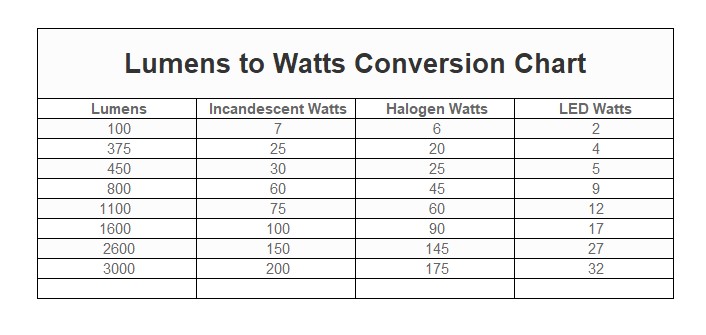
Conversion Chart
Chart Application Examples
An example of the conversion chart’s usefulness is when selecting outdoor lighting, a 30 lumens LED bulb could be swapped with either 1.5 or 2 watts, while 40 and 60 lumens require 3 and 4, respectively. This same procedure can also apply in commercial areas that need to determine adequate brightness for bulbs between 100 and 10,000 lumens, which addresses all kinds of business illumination needs.
Factors Influencing Luminous Efficacy

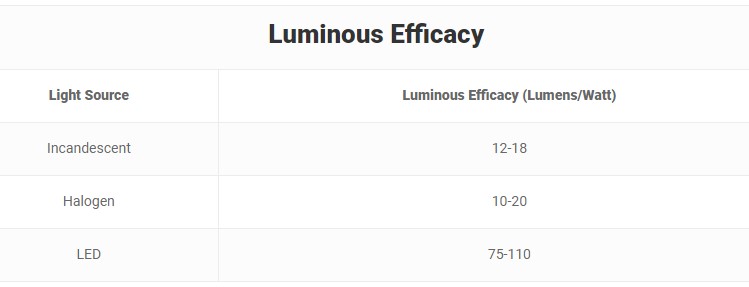
Luminous Efficacy
The luminous efficacy of a light source enables one to determine how well it can convert energy (watts) into lumens or visible light, also known as the luminous flux. This allows for an evaluation of its ability to produce bright illumination with low power usage, enhancing its cost-effectiveness and energy efficiency when illuminating any space.
What Impacts Efficacy?
The energy efficiency of lights, their luminous efficacy, and lumen output are affected by a range of factors such as bulb design and type, color temperature, and lighting technology. For example, light-emitting diode (LED) technology has been known to generate high levels of lumens at low volts, making it an ideal solution for conserving energy. LED bulbs are praised for their ability to produce light while maintaining efficient power consumption rates, thus aiding in achieving optimal electricity savings goals.
Maximizing Efficiency with High-Efficacy Bulbs
Traditional incandescent bulbs consume much more energy than LED bulbs, which can provide the same amount of light while utilizing up to 80% less electricity. This results in substantial savings on power bills and is why a long-lasting bulb with exceptional energy efficiency like an LED bulb, is a great substitute for older types of lighting.
A higher wattage (lm/w) value means that it has greater luminous efficacy, ensuring optimal output when measuring the electrical consumption for each unit produced from light sources, including both LEDs and Incandescents.
The Aesthetics of Light: Beyond Brightness
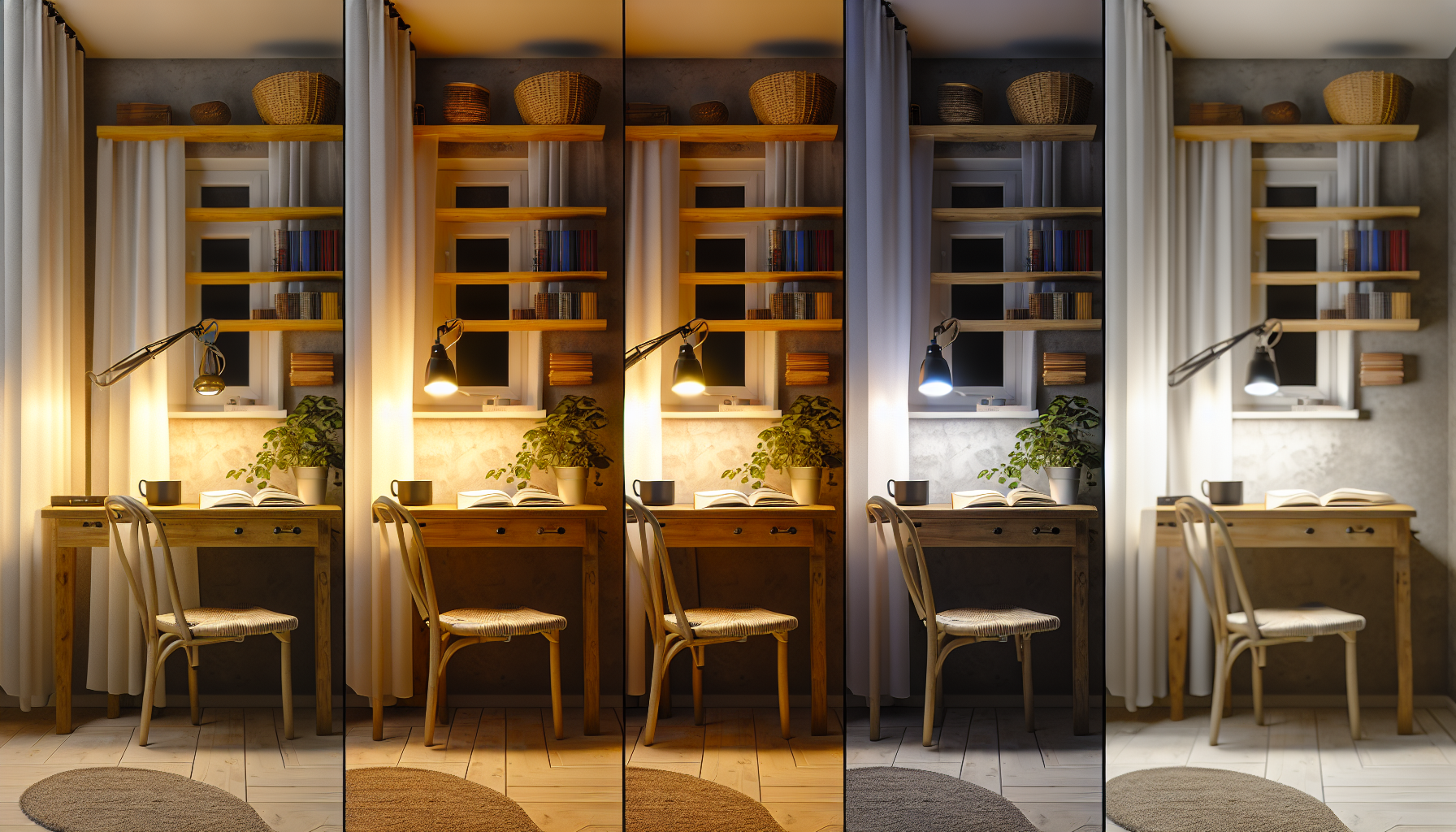
When it comes to creating the perfect atmosphere, lighting is a crucial factor that goes beyond brightness. Light appearance and color temperature greatly impact our psychological state; they determine our comfort level and emotions. Aesthetics in terms of light are vital for establishing desired ambiance and moods.
Color Temperature and Mood
The Kelvin scale measures color temperature, influencing how light appears and the ambiance it conjures. Warmer temperatures make for a homely environment, while cooler daylight-like shades foster enthusiasm.
For instance, lighting used for studying usually comes with settings that range from 5000K to 6500K, just bright enough without compromising concentration or sharpness of vision.
Assessing Light Appearance
Lighting can determine the mood and ambiance of a room, meaning that more than just brightness or color temperature must be considered. Key factors affecting how light appears are the Color Rendering Index (CRI), environmental elements around it, surface conditions from which it is reflecting off, and optical illusions resulting from surrounding lighting setup.
Understanding these variables will help you make better decisions when choosing appropriate lighting to create your desired atmosphere.
Smart Choices in Lighting: Integrating Lumens and Technology
Lighting has been revolutionized with the emergence of smart homes, enabling advanced functionality and control. By utilizing lumens to maximize energy efficiency, these innovative lighting systems can provide optimal output in terms of conservation and cost-effectiveness.
Smart Lighting and Lumens
Regarding smart lighting, the lumen-per-watt ratio is a major priority. This requires utilizing multi-layered light sources, which include natural and electric, to generate desired levels of lumens/brightness that users can adjust with features such as remote control or scheduled options.
Cost vs. Benefits of Smart Bulbs
Smart bulbs, ranging in price from $15 to $60 depending on their features, can provide long-term cost savings thanks to their lower power consumption and consequently reduce energy bills. These high-end smart light bulbs usually come with useful capabilities such as remote app control allowing for adjustable lighting color. Scheduling options as well as creating dynamic effects plus energy-saving possibilities.
Navigating the Lighting Facts Label
The Lighting Facts label is an essential asset for consumers, providing crucial information when selecting a light bulb. It displays lumen measurements representing brightness, as well as watts, to denote the energy usage of bulbs. With this data at their fingertips, customers can feel confident they are making sound decisions about lighting options.
Interpreting the Label for Better Purchases
A Lighting Facts label is important when choosing light bulbs for your home. It provides key insights into the brightness, energy use, lifespan, and even the appearance of various bulbs so that you can choose an option that best fits your desired ambiance while also being efficient and cost-effective. Understanding wattage gives you the power to understand it. Insight into how much power they will require to run optimally. With this in mind, choosing lighting solutions with favorable ratings on all levels can be easily determined via labels from reputable manufacturers promoting safety.
The Environmental Impact Indicated on Labels
A Lighting Facts label provides customers with information on energy efficiency and annual estimated cost, thus helping them make wiser decisions when purchasing eco-friendly bulbs. This data can be used as a reference regarding how much lighting will cost over time while also minimizing energy use.
Summary
Knowing lumens and watts to calculate the brightness of light bulbs can be a big help in our lives, from finding an ideal lamp for reading purposes to making eco-friendly decisions with LEDs or smart bulbs. This awareness will contribute towards better illumination while cutting down on energy consumption.
Frequently Asked Questions:
1. How bright is 1000 lumens in watts?
The brightness of a 100-watt incandescent bulb is roughly equivalent to the 1000 lumens. It should be noted that there is no exact relationship between wattage and lumen measurement when referring to CFLs or LEDs.
2. How many LED lumens is a 60-watt bulb?
To get the same brightness as a 60-watt bulb, you should look for an LED bulb that produces approximately 800 lumens. Luminosity is measured in lumens, while energy consumption is measured in watts. Lumen values range from 700 to 800 for such bulbs since they measure how bright light appears and watts reveal power usage.
3. Is 800 lumens 60 watts?
Eight hundred lumens is about the same light as a 60-watt incandescent bulb. This illumination equates to approximately what one would find with any traditional style.
4. What is the LED equivalent of a 60-watt bulb?
The wattage of LED bulbs is typically lower than that of traditional incandescent ones. A 6-watt bulb can act as an equivalent to the 60-watt one. Switching out old incandescent for LEDs requires fewer watts to get similar results.
5. What are lumens?
Lumens can be used to assess the intensity of visible light that a bulb emits, thus determining how bright the illumination will be. As a unit for measuring such luminosity and brightness, lumens are essential in providing an accurate measurement.
